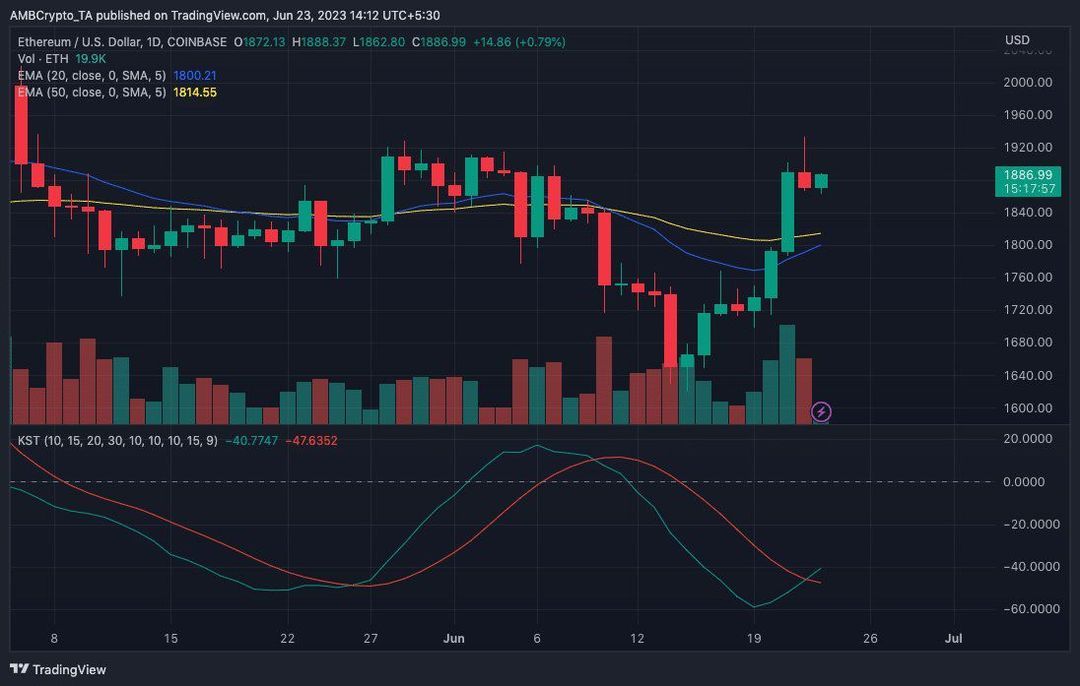Why Ethereum fees, supply may be ETH’s ticket to a new altitude?

With decreasing exchange supply and fees, ETH has begun showing signs of repeating an earlier uptick.
Exchange supply decreased while short-term price action tilted upwards.
ETH experienced high liquidity despite low network congestion.
According to Santiment, Ethereum [ETH] fees were back to the low points experienced in March. During that period, ETH exchanged hands a little above $1,700. But a few weeks later, the altcoin surged to $2,100.
Hailed as the backbone of Decentralized Finance (DeFi), Ethereum fees are determined by network traffic. So, when there is high demand for transactions and an increased need for validator verification on the network, fees spike.
But lower fees appear when there is less congestion on the blockchain. While these fees have been a point of contention for Ethereum users, they may actually hold the key to unlocking ETH’s potential for reaching a new high.
Waning downtrend for the altcoin king.
As the on-chain data platform also stated, ETH supply on exchanges has continued to increase. For context, the supply on exchanges is an indicator of the circulating supply percentage stored on wallets provided by centralized exchanges.
Typically, a hike in the metric could have bearish implications. But a fall in the metric indicates bullish conviction while putting pressure on the ETH long-term price.
As per its price action, the Know Sure Thing (KST) indicator was down in the negative region. Usually, a positive reading of the KST signals a waning upward momentum. So, the declining KST suggests that ETH’s fall from $1,900 could be short-lived, and $2,000 might only be moments away.

In terms of the Exponential Moving Average (EMA), the ETH/USD daily chart showed that the trend was currently bearish. This was because the 20 EMA (blue) was below the 50 EMA (yellow).
However, 50 EMA had the tendency to crossover the 20 EMA, provided demand increases. If this happens, then ETH could turn bullish as suggested by the KST.
More eyes on Ether
Furthermore, on-chain data showed that ETH’s Open Interest (OI) has maintained its hike since 19 June. The OI acts as a key indicator of the options and futures contracts’ commitment to a particular cryptocurrency.
Since ETH’s Open Interest increased, it means there is high liquidity dedicated to short and long positions. This could also serve as a bullish signal for the altcoin.
However, traders might need to watch out for the period when the OI grows too high. In such a situation, the asset might turn bearish depending on the broader market trend.
Additionally, the 24-hour active addresses, which initially soared had decreased. At press time, the metric was down to 391,000. This indicates that unique visits to the Ethereum blockchain reduced.
Historically, there has been no constant correlation between the active addresses and ETH price. So, the decline in the metric could have negligible effects on the price action.
19 comments